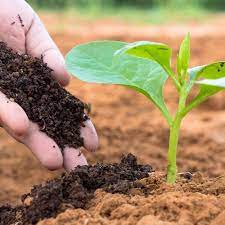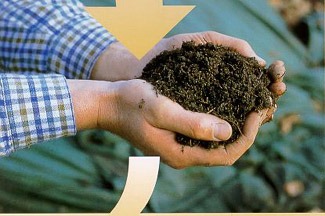COURTESY : www.smilinggardener.com/
ORGANIC COMPOSTING
This isn’t just a way of recycling organic waste – organic compost is actually one of the most valuable things we grow in the garden.
What is organic compost?
It just means we’re making compost from organic materials, without any added chemicals or genetically-modified ingredients or manure from animals that have received drugs, etc.
Since compost is a complex community of living organisms, we kind of are ‘growing’ it just like we grow cucumbers or raspberries.
There are different organic composting methods and lots of details that can help you fine tune when you’re making compost, but the basics are as follows…
Organic Composting Ingredients – Don’ts

Generally speaking, almost anything that was once alive can go in when making a compost bin.
You probably want to avoid large amounts of meat, too much dog and cat waste, and obviously anything toxic.
I avoid pernicious weeds like quack grass and bindweed, which might survive the organic composting process and spread around my garden, but other weeds are okay and just add to the nutrition.
You might also want to think about whether there are any large critters in your area who would enjoy eating your compost pile (rats, raccoons, bears…), and either avoid putting in materials that will attract them or build a bin they can’t get into.
When making compost, I don’t use genetically modified materials, because those pesky little genes, once transplanted into a different organism from the one they started in, tend to feel restless in their new home and are more likely to jump ship and find their way into other organisms in your garden…
Organic Compost Ingredients – Yes, please!
The basic organic composting ingredients are plants (such as leaves, weeds, grass clippings, and straw), manure, and food scraps.
You may have heard talk about “greens” and “browns.” This refers to the relative proportions of carbon and nitrogen in each material, not to their actual color.
“Greens” are relatively higher in nitrogen, like horse manure or especially other manures such as chicken manure (even though they’re brown!), fresh grass clippings, seaweed, and many kitchen scraps.
“Browns” are higher in carbon, like straw/hay, leaves and sawdust or wood chips.
Plant materials fall in different places along this spectrum. Higher-nitrogen materials tend to be softer and more pliable, while higher-carbon materials feel more stiff and woody.
You want a ratio of somewhere between 2:1 and 4:1 browns to greens, by volume (update: these days I use more like equal parts browns and greens). Too much carbon, and your organic compost will be slow; too much nitrogen, and it risks getting anaerobic, smelly, or even too hot.
The more diverse your feedstock, the more diverse the nutrients and microbes will be in your finished compost…
Composting 101 – How To Make Organic Compost

For a nice hot compost pile, the ideal size is between 3’x3’x3′ and 5’x5’x5′. I’m leaning a little more to the bigger side these days.
Too small and it won’t get hot enough, so weed seeds won’t be killed. Too big and the center won’t get enough air to keep the process aerobic.
The main way to get air into your compost pile is to turn it.
You can do this as soon as the compost cools down after a week or so, or you can turn it once or twice a season, depending how your desire for fast organic compost and burly shoulder muscles balances with your basic human laziness.
Making compost that stays hot by turning it often can be done in as little as a few weeks if you’ve found a way to chop up all your materials into small pieces.
But I usually like to turn it just a couple of times throughout the season even if it takes 8 months to finish, because in addition to the fact that it’s less work, it retains more nutrients and beneficial organisms that way.
It depends what your goals are. Turning more often keeps it hotter and hence faster, while leaving it alone allows it to generate more humates and off-gas fewer nutrients, and it encourages more diverse beneficial microbes.
The next step for how to compost is to get the right moisture level. The cliché is “as wet as a wrung-out sponge.”
If your materials are dry when you’re building it, you’ll want to water the layers as you go. Then you can put a tarp over it once the ingredients are all in, or just top it with a layer of straw to keep moisture in or out as needed. In summer you may need to water it a few times.
Don’t be surprised if your beautiful compost pile shrinks down to as little as a third of its original size.
That’s just the microbes doing their job, turning your waste materials into an alchemical elixir that keeps your garden healthy and thriving.
What did I miss? Ask me your organic composting 101 questions down below…




